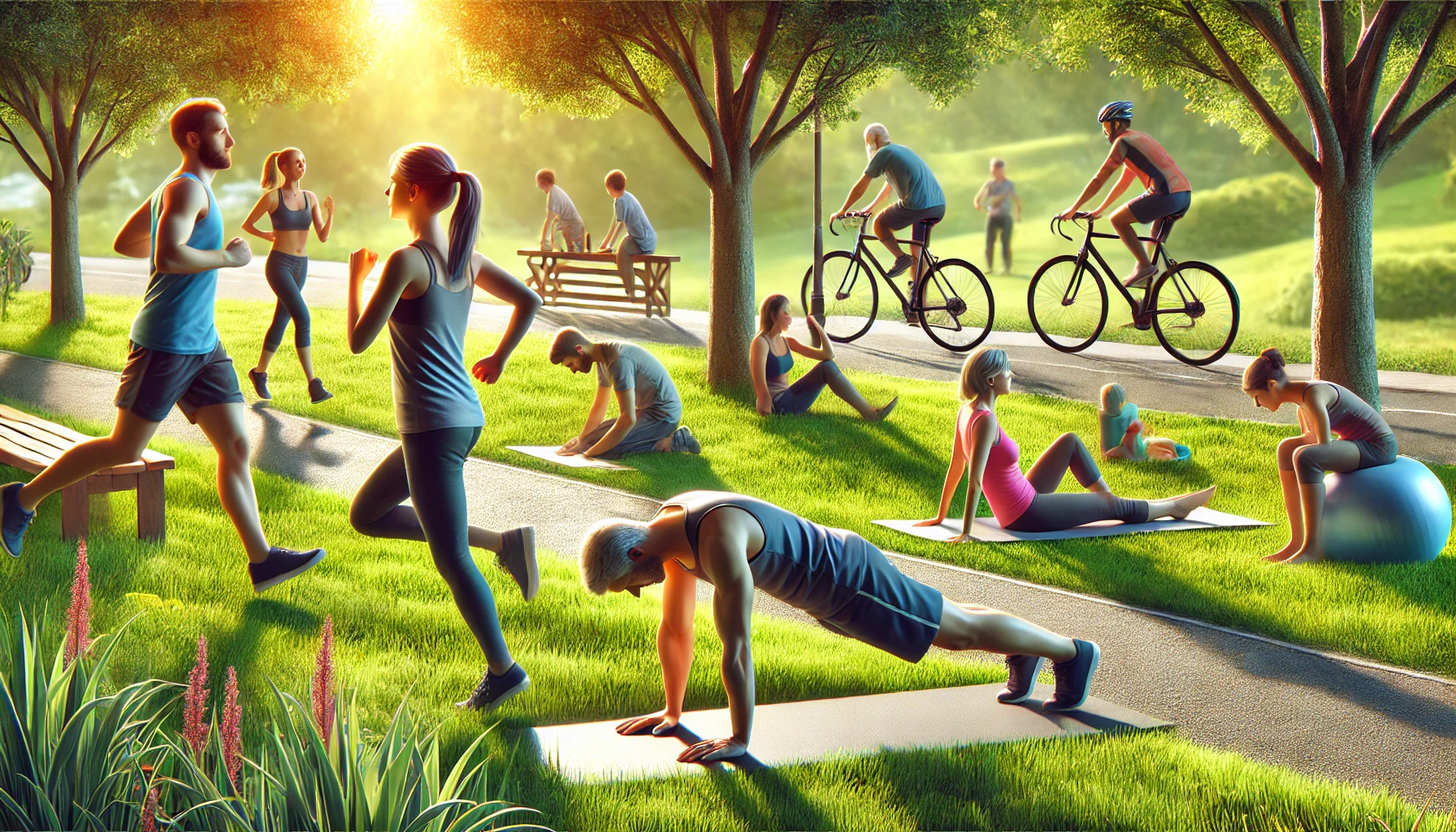Regular physical activity is one of the most powerful ways to improve your health, boost your mood, and increase energy levels. A sedentary lifestyle is linked to obesity, heart disease, diabetes, and even mental health issues.
The good news? You don’t need to become a professional athlete to experience the benefits—just moving your body consistently can make a huge difference! In this guide, we’ll explore the health benefits of exercise and how to make it part of your routine.
1. The Health Benefits of Regular Exercise
💪 Physical Health Benefits
- Strengthens the heart – Reduces the risk of heart disease and high blood pressure.
- Improves lung function – Increases oxygen supply to the body.
- Helps with weight management – Burns calories and builds muscle.
- Regulates blood sugar levels – Lowers the risk of type 2 diabetes.
- Boosts immunity – Enhances the body’s ability to fight infections.
- Strengthens bones and joints – Prevents osteoporosis and arthritis.
🧠 Mental Health Benefits
- Reduces stress and anxiety – Releases endorphins, the “feel-good” hormones.
- Improves mood and fights depression – Regular movement increases serotonin levels.
- Enhances focus and memory – Stimulates brain activity and cognitive function.
- Boosts self-confidence – Achieving fitness goals increases self-esteem.
2. How Much Exercise Do You Need?
The World Health Organization (WHO) recommends:
- 150–300 minutes of moderate exercise per week (e.g., brisk walking, swimming).
- 75–150 minutes of intense exercise per week (e.g., running, HIIT workouts).
- Muscle-strengthening activities at least twice per week (e.g., weight training).
Even small daily activities, like taking the stairs instead of the elevator or walking instead of driving, contribute to your overall fitness!
3. Easy Ways to Incorporate Exercise Into Your Routine
🚶 Walk More Throughout the Day
- Take walking breaks during work.
- Use the stairs instead of elevators.
- Walk while talking on the phone.
🏋️ Try Strength Training
- Bodyweight exercises (squats, push-ups, lunges) require no equipment.
- Use resistance bands or dumbbells for variety.
- Strength training improves metabolism and burns fat even at rest.
🧘 Find an Activity You Enjoy
- Dancing, cycling, swimming, or hiking—choose something fun!
- Exercise with a friend or a group to stay motivated.
- Try yoga or pilates for flexibility and relaxation.
⌚ Set Realistic Goals
- Start small—10–15 minutes a day is better than nothing.
- Track your progress with a fitness app or journal.
- Celebrate milestones to stay motivated!
4. Overcoming Common Exercise Barriers
- “I don’t have time.” → Try short, high-intensity workouts (HIIT).
- “I don’t like the gym.” → Workout at home or outdoors.
- “I lack motivation.” → Find a workout buddy or set rewards for consistency.
- “I have injuries or health issues.” → Consult a doctor for safe exercises.
Final Thoughts
Exercise is not just about losing weight—it’s about improving your quality of life. Whether it’s walking, stretching, or lifting weights, moving your body regularly will help you feel stronger, healthier, and happier.
Start today—your future self will thank you!
